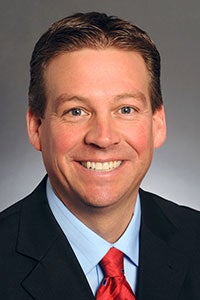Dan Sparks: Bonding the focus for the 2020 Legislative session
Published 6:33 am Saturday, February 8, 2020
My colleagues and I are headed back to the Capitol on Tuesday, Feb. 11 to begin the 2020 Legislative session. Last year, my colleagues and I came together to pass a bipartisan budget bill and addressed major policy provisions like the hands-free cell phone bill. With the major work of putting a budget together complete, we can now turn to what has been the traditional focus in the second year of a biennium.

Dan Sparks, District 27B
While we focus on a budget in the first year of a biennium, year two is focused on creating a capital investment bill, more commonly called a bonding bill. The bonding bill uses state bonds to fund important public infrastructure and asset needs throughout the state. These requests come from local units of government, our states colleges and universities, state agencies, and economic development projects. Bonding has been used to build things ranging from the Hormel Institute to the Xcel Energy Center.
As a member of the Senate Capital Investment Committee, I had the opportunity to host my colleagues on the committee in Austin this fall to hear about local needs. The committee went on bonding tours throughout the state in fall of 2019, which helps them get an understanding of the importance of these projects to local communities, and Austin was no different. I want to thank Mayor Tom Stiehm and the other city officials who presented to our committee for their great advocacy.
One bonding request was for continued flood mitigation efforts. Our area has benefitted from bonding for flood mitigation efforts in the past, and it remains a need. This was a theme that my colleagues heard about in many of their stops, as extreme rain events and other factors contribute to more flooding events throughout the state. I’m optimistic that this will be supported and was heartened to see Governor Walz include it in his initial bonding bill proposal.
The biggest request in Austin was to replace the wastewater treatment plant. The 80-year-old plant’s aging infrastructure needs much repair, and replacement is the best option. The plant is also currently not compliant with regulations established by the Minnesota Pollution Control Agency in terms of its outflow of phosphorous. It would be impossible for Austin to handle this cost alone. Though it was not included in the governor’s initial bill, I will continue to work with local officials and my colleagues on the committee to getting it included in the final bill.
A bonding bill is one of the most bipartisan pieces of legislation — because for it to pass, it needs a three-fifths supermajority of votes in both the House and the Senate. With divided government, we will need to come together to pass a bill that puts the interest of Minnesotans first. I look forward to working with my colleagues to get that done this year.





